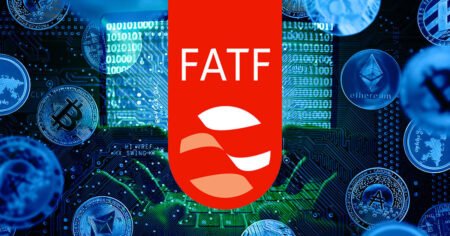The Future of Stablecoins: PayPal’s PYUSD and the Path to Adoption
As the digital payments landscape evolves, stablecoins are gaining momentum, yet comprehensive adoption in the U.S. is still a distant goal. In a recent interview with Bloomberg TV, PayPal CEO Alex Chriss emphasized the lack of meaningful incentives for consumers to adopt stablecoins, particularly amidst established payment infrastructures that dominate the market. PayPal has recognized this challenge and is actively pursuing strategies to enhance user engagement and build a competitive edge in the stablecoin domain, particularly with its newly launched dollar-pegged stablecoin, PYUSD.
Regulatory Trends Shaping Stablecoin Adoption
Chriss’ insights come at a pivotal time in the regulatory arena, with the Senate’s passage of the GENIUS Act, which seeks to establish a structured framework governing dollar-pegged stablecoins. This act is gaining traction and could set the stage for broader federal oversight, reshaping how traditional financial institutions interact with these digital assets. The potential coupling of the GENIUS Act with the CLARITY Act in the House is seen as a significant move towards a cohesive regulatory environment, propelling stablecoins from niche products used in crypto trading to viable options for everyday payments.
The Market Potential of Stablecoins
The landscape for stablecoins is vibrant, with a current market valuation of approximately $257 billion as of June 2025, projected to double by the end of the following year, according to Bastion reports. Despite this growth, retail transactions in the U.S. remain predominantly linked to credit cards, where interchange and assessment fees can be as high as 2 to 3 percent. This dynamic presents an opportunity for blockchain-based payment solutions, but consumers often lack a compelling reason to transition their payment habits. PayPal aims to address this by introducing perks and rewards that enhance the appeal of using PYUSD instead of traditional payment methods.
PayPal’s PYUSD Launch and Consumer Incentives
Launched in August 2023 in collaboration with Paxos, PayPal’s dollar stablecoin, PYUSD, operates on the Ethereum network as an ERC-20 token. To drive consumer interest, PayPal has introduced an attractive annual yield of 3.7% on PYUSD balances. This strategy positions PYUSD to compete with established stablecoins like USDC and USDT, which together capture over 90% of the market. With a mere 0.4% market share amounting to roughly $981 million, PayPal recognizes the urgent need to offer tangible benefits—such as rewards programs—to incentivize users.
Expanding Horizons: Cross-Border Payments
Beyond domestic transactions, cross-border payments represent another key area for PYUSD application. The World Bank notes an average remittance fee of 6.3% to 6.6% globally, indicating a significant opportunity for blockchain technology to reduce costs. Chriss anticipates that initial applications of PYUSD will likely target international transfers, promising faster and more affordable payment solutions. Plans to integrate PYUSD within the Stellar blockchain aim to enhance remittance capabilities under PayPal’s PayFi strategy, allowing the company to tap into a lucrative market segment.
Competitive Dynamics and Market Reaction
The GENIUS Act’s progress has spurred investor caution, especially for traditional payment networks like Visa and Mastercard. Following the Senate’s vote, shares of these card companies experienced declines, signaling that the emergence of stablecoins could disrupt the established payment landscape. While both Visa and Mastercard have explored blockchain technology, they face mounting competition from emerging payment options like PYUSD and others. The tension between traditional and digital payment systems will likely intensify as more consumers seek cost-effective and efficient payment solutions.
Bridging the Gap: PayPal’s Strategic Vision
As PayPal pioneers efforts to create a competitive space for stablecoins, it recognizes the distinct incentives shaping adoption outside the U.S. In developing nations, stablecoins provide crucial access to the dollar, enabling cost-efficient cross-border transactions. In contrast, U.S. consumers operate within a financial framework that already offers various conveniences, diminishing the perceived necessity for stablecoins. PayPal’s initiative to link yield strategies and reward offerings with regulatory alignment reflects a comprehensive approach as it endeavors to secure a foothold in the burgeoning stablecoin market.
In conclusion, while PayPal’s efforts to promote PYUSD through competitive rewards and yield features highlight its commitment to facilitating stablecoin adoption, the path ahead remains uncertain. As regulatory frameworks evolve and consumer behavior shifts, the potential for stablecoins to redefine the payments landscape will continue to unfold, revealing new opportunities and challenges for PayPal and the broader financial ecosystem.

















